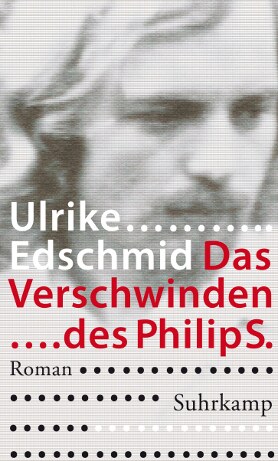Fiction
Ulrike Edschmid
Das Verschwinden des Philip S.
[The disappearance of Philip S.]
Ulrike Edschmid
Das Verschwinden des Philip S.
[The disappearance of Philip S.]
This book was showcased during the special focus on Russian (2012 - 2014).
Review
In May 1975, Philip Werner Sauber, scion of a wealthy Swiss businessman, was shot to death in a shootout with the police at a parking lot in Cologne. He was suspected of being involved in a political kidnapping; yet at the time of the crime, he had been working at a factory in Cologne under an assumed name.
Thus far, biographical works dealing with West Germany’s militant leftist scene, during the so-called “leaden” 1970s, have been written with the hindsight of contemporary history, from the perspective of sympathizers alive today, or from reports by “dropouts.” Films and novels also have attempted to reconstruct a narrative of the era.
Each of these approaches offers us a different piece of the puzzle to help answer how and why Germany’s political resistance movement had turned so radical, and how advocates of social change transformed into violent criminals. Ulrike Edschmid’s memory book, “The disappearance of Philip S.,” adds yet another piece to the puzzle by offering hints rather than answers, and subtly confers a new urgency to a question that easily could resurge today.
The author of the book, Ulrike Edschmid, had lived together with Philip S. for four years after he had moved to West Berlin in 1967, and they remained close friends for many years thereafter. He was 20 when they first met in the corridors of the Berlin Film Academy, she was seven years his senior. The encounter must have been a coup de foudre, because without further ado, Philip’s offer to help the single mother move resulted in a group living project.
The young man from Zurich stood out among his fellow students: he wore pinstripes, shirts with monograms, a long black coat, hand-sewn shoes. He was pensive, sophisticated, and an aesthete. At the Film Academy, he joined the “formalists and screen poets,” and his experimental film, “The Lonely Wanderer,” combined an enigmatic visual aesthetic with music by Schubert and Brahms. But his parents' home, a villa on Lake Zurich, was an “icy fortress” in which the arts and culture counted for nothing and wealth for everything.
Philip S. moved into a commune with the author and affectionately took care of her son. They were active in the children's day care movement and traveled together to Italy, which was a promising country in terms of its political movements. But then a subtle change occurred as the ambiguous title suggests: “The disappearance of Philip S.”: The film student gradually began to transform into the terrorist wanted posters called, “Werner Sauber”. He erased his personal history and identity and disappeared into the armed underground, into the conspiratorial anonymity of those who believed they could destroy society’s rigid status quo by turning to violence. His partner followed him up to a certain point, but ultimately chose life and her child instead. At the time of his death, she had been out of touch with him for three years.
Beyond the rhetoric of guilt or justification, and written in a clear straightforward prose, Ulrike Edschmid gives us a psychological portrait of a man who had replaced his artistic ambitions with a supposedly “heroic mission.” The author creates a succinct atmospheric portrait of an era that in many ways remains incomprehensible, and the protocol of a tragedy that relates not only to an individual love relationship, but an entire society.
Translated by Zaia Alexander
By Kristina Maidt-Zinke
Kristina Maidt-Zinke is a book and music critic at the Süddeutsche Zeitung and also writes reviews for Die Zeit.


